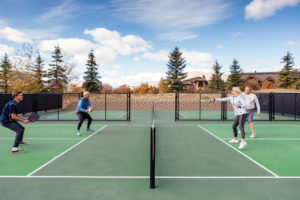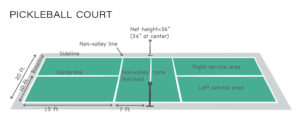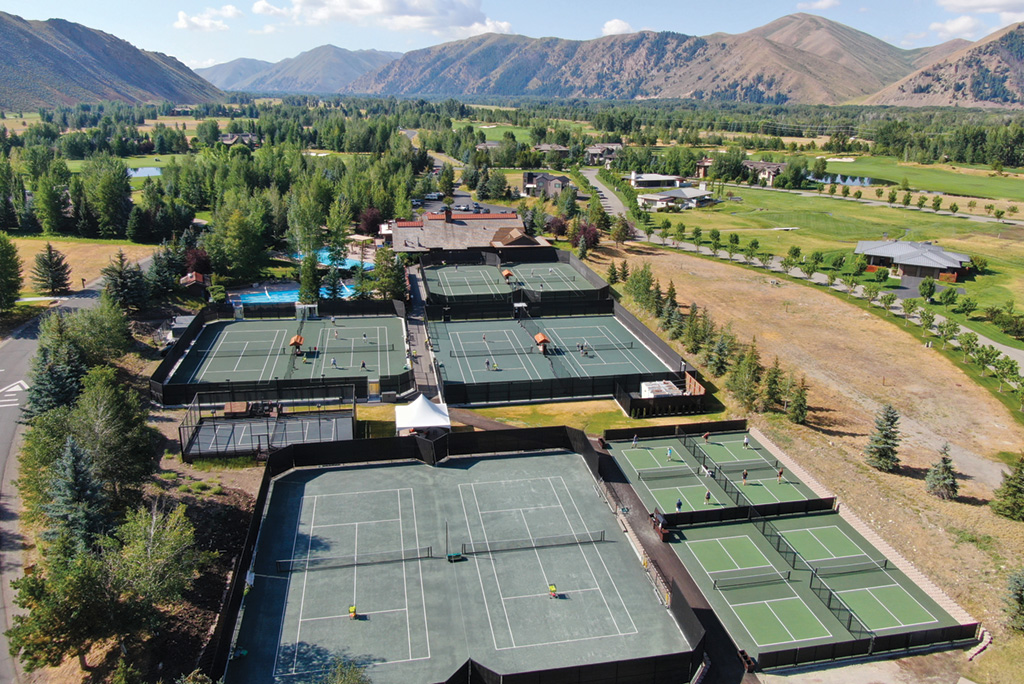In a world where sports have been dominated by familiar terms such as “touchdown” and “buzzer-beaters,” one sport has taken the nation by storm, and the jargon is anything but recognizable to the mainstream sporting world.
If you go by a park these days, you are more apt to hear players congratulating each other for a successful “dink” or “third shot drop” rather than a powerful ace on a nearby tennis court. Simply put, pickleball is more accessible, and just more fun, for most people than other racquet sports.
Let me preface this by saying that I am not inferring that pickleball is the better sport. In fact, I would argue that tennis is the better game when played at the highest level. The reality is, most people will never get anywhere near that enjoyment without dedicating enormous amounts of practice time and resources towards improvement, something many may not have the ability to do.
The unexpected growth of pickleball over the past decade has been nearly as perplexing as the scoring system. When, and how, did this—if you will—0-0 start?
The slow decline in the popularity of tennis from the peak of the sport in the 1980s may
have created the foundation for pickleball’s growth. Sprawling tennis complexes built decades ago are now being retrofitted into pickleball courts, much to the displeasure of tennis purists. While some tennis players were slow to adapt, many who begrudgingly tried pickleball have fallen in love with the game. Others are not quite sold that both sports can coexist harmoniously.

“Of course, both sports can coexist, and I think we are starting to see more tennis players who were skeptical of pickleball invading their space now understanding that it is a game that is fun to play and very social,” said Fred Hartzman, current Head Pickleball Professional at The Valley Club in Hailey, Idaho. “There is no reason why players can’t switch between all racquet sports.”
It is probably worth listening to Hartzman, who recently moved to the Sun Valley region from Indian Wells, California, where he directed the largest pickleball tournament in the world over the past several years. During his tenure as the Director of Racquets at the Indian Wells Tennis Gardens, he watched the event he helped create, known to all enthusiasts simply as “The Nationals,” grow exponentially from season to season, with thousands of pickleball players and coaches converging from around the world to what is now becoming one of the most notable spectacles in racquet sports.
Hartzman started avidly playing pickleball five years ago and now enjoys coaching and playing tennis, as well as pickleball and platform tennis, and finds that the variety of playing the different sports makes him better at all three.
So why has pickleball taken off so much over the last decade when it has been around for over 50 years?
One potential clue might be to look at a major barrier that keeps people from playing tennis socially: the tennis serve. Serving is difficult, and the spotlight is on you, and you solely, for an entire game of back-and-forth points; whereas in pickleball, the serve is constantly rotating between players.
Anyone who has been in a slow tennis match knows the pain of playing with a player who cannot get their serve in, or on the other end of the spectrum, the anguish of playing against someone who has such a dominant serve that the points don’t even get started to begin with.
Conversely, pickleball gives players the chance to hit serves underhanded into a target only 22 feet away from them, 17 feet shorter than a tennis serve. Similarly, the return of serve is significantly easier than it is in tennis, and due to the rules, you do not have to worry about a net player poaching your return
of serve.
This means that in an average pickleball game, the point is starting almost every single time; therefore, players spend more time rallying, playing points and enjoying getting exercise while socializing.
“The serve in pickleball is not a weapon, which equals the playing field for players of all levels,” said Hartzman. “The game is easy to play but hard to master. Because of that, the rallies are long, frequent and dynamic.”
This is a common theme you hear when people talk about pickleball. Experienced players can wear down more athletic adversaries by mastering the “soft” game, while those with little experience can still compete at any age.
So why do some tennis players get offended that so many people around the country are falling in love with the “platypus” of the racquet sport world that includes elements of badminton, tennis
and ping-pong?
For one, pickleball courts began to take over dedicated tennis courts, which got things off to a bad start as the sport began to surge. Admittedly, as a former college tennis player myself, I strongly disliked seeing my favorite sport losing ground—literally. And, as tennis players tried to blow out the flame of pickleball by not adapting to change, they saw court after court get converted around the country.
More and more complexes in Blaine County are adding dedicated and multi-lined courts, and I see players going between both sports constantly, sometimes even in the same day.
So to those who are slow to adapt or think that the game is not for them, it might be worth trying. Tennis players, please embrace the pickleball community with open arms. In reality, they are directly responsible for significant investments in our parks and rec facilities, and the sooner we can all get along, the better it will be for all racquet sports.
Here in the Wood River Valley, I have watched our racquet community adopt pickleball with open arms, which is uniquely 5B and perhaps a reflection of the deep tradition of athletes who cross-train in our community. Personally, I feel extremely fortunate to have yet another fun racquet sport to play and share with our community—but don’t even get me started about badminton and ping-pong!

PICKLEBALL LINGO
Whether you’re scoring aces or getting pickled, playing pickleball is guaranteed to be a good time. Here is a glossary of common pickleball terms to help you talk the talk:
ACE A serve that is so epic, the opponent cannot return it, and a point is won.
DILLBALL A shot that is inbounds and has bounced once: a live ball.
DINK SHOT A soft shot that falls into your competitor’s kitchen. (Find out what the kitchen is below.)
FALAFEL A shot that falls short due to hitting the pickleball ball without any power. Also known as a “dead paddle.”
FLABJACK A shot that must bounce once before it can be hit. This occurs during the first two shots of any point. (After the third shot, no bounce is necessary).
KITCHEN This seven-foot section of court is on either side of the net, and players are not allowed to volley the ball in this zone.
PICKLE! A server shouts “Pickle!” to let all the other players know they are about to serve.
PICKLED When a team scores zero points in a whole game, you’ve been pickled.
PICKLER A pickleball addict. Can’t stop talking about the sport? Are you dreaming of pickleball?You’re probably a pickler.
POACH When you cross over into your partner’s side of the court to hit a shot.
SMASH A shot that is hit above the hitter’s head. Also known as an overhead shot.
VOLLEY LLAMA An illegal move, or fault, where a player hits a shot in the kitchen.
WHY IS IT CALLED PICKLEBALL?
There are two different accounts of where the name of the game originated: Joel Pritchard’s wife, Joan, called it pickleball because “the combination of different sports reminded me of the pickle boat in crew where oarsmen were chosen from the leftovers of other boats.” But according to Barney McCallum, they named the game after Pritchard’s dog, Pickles, who was known to run off with the ball during a game.


